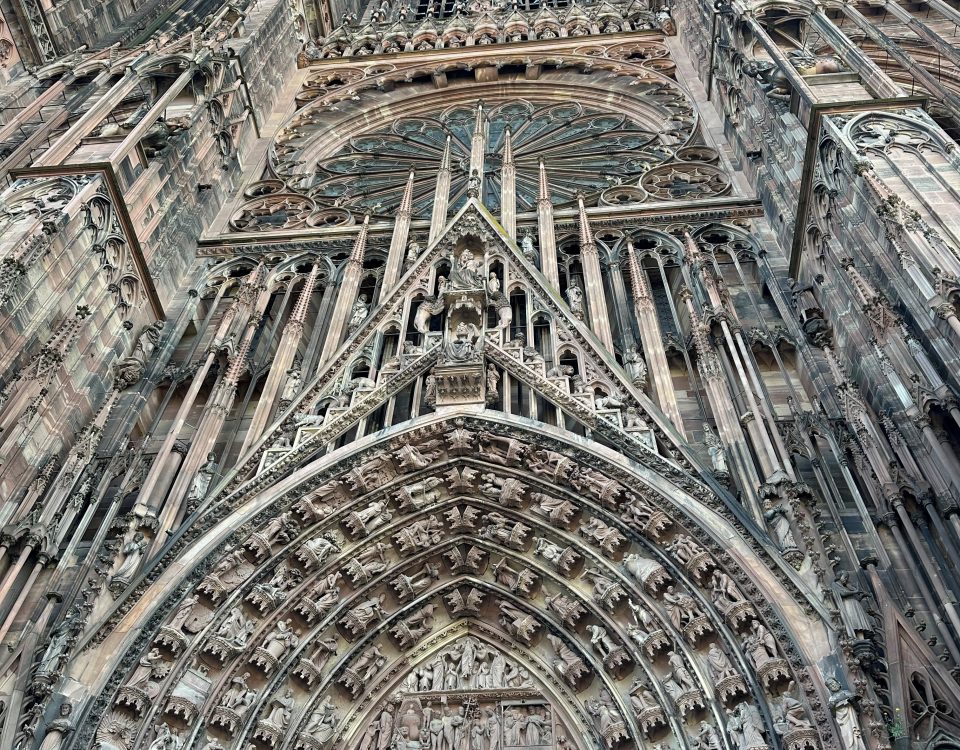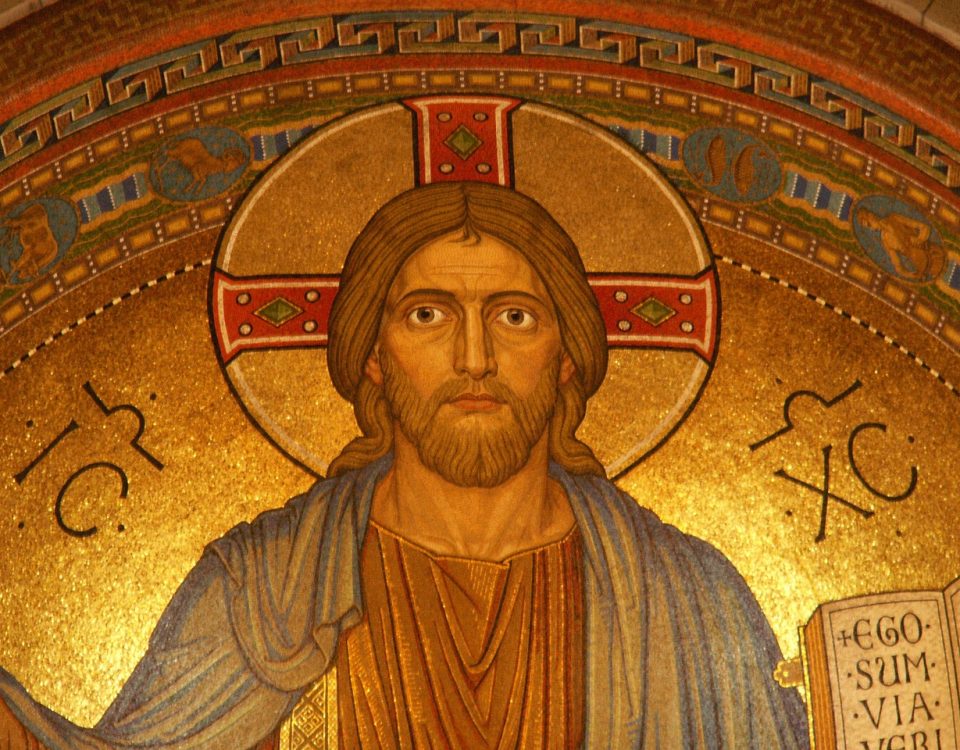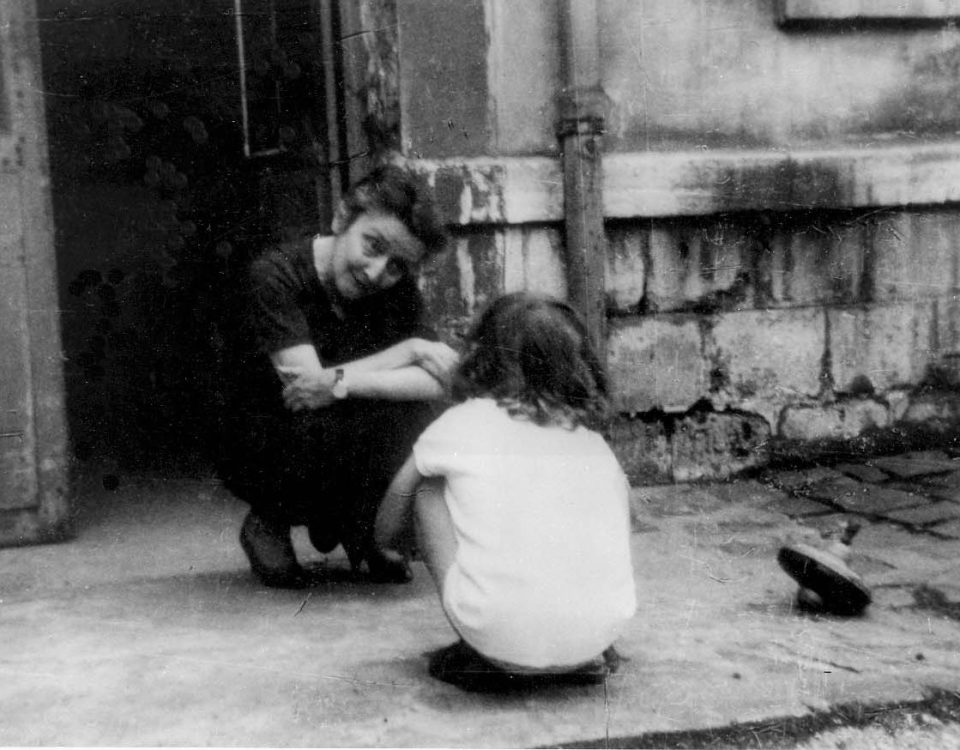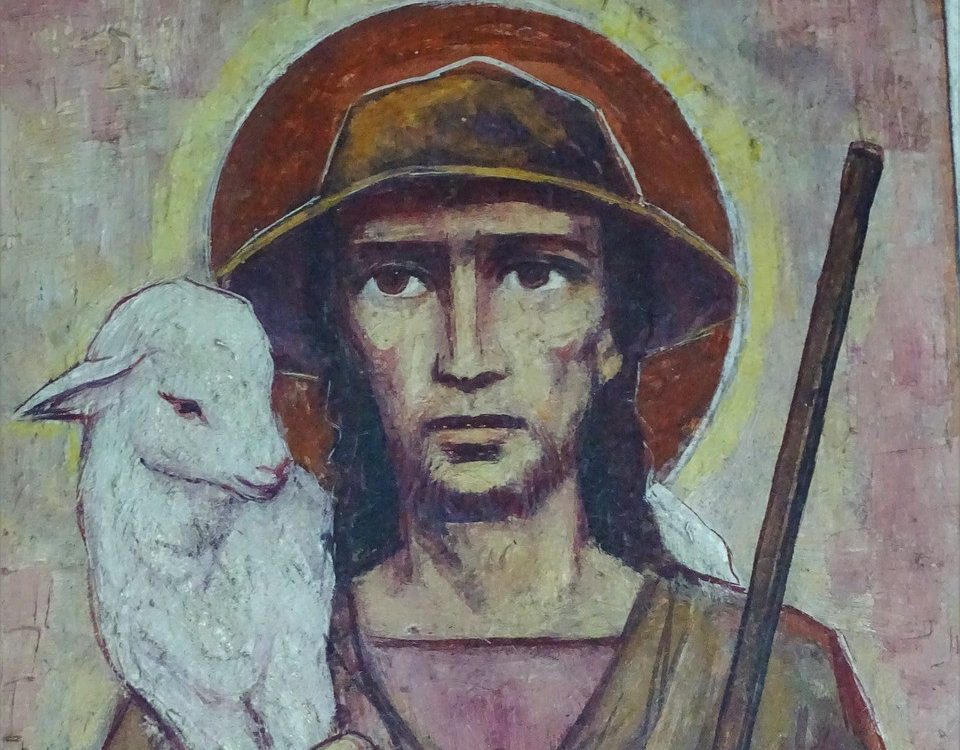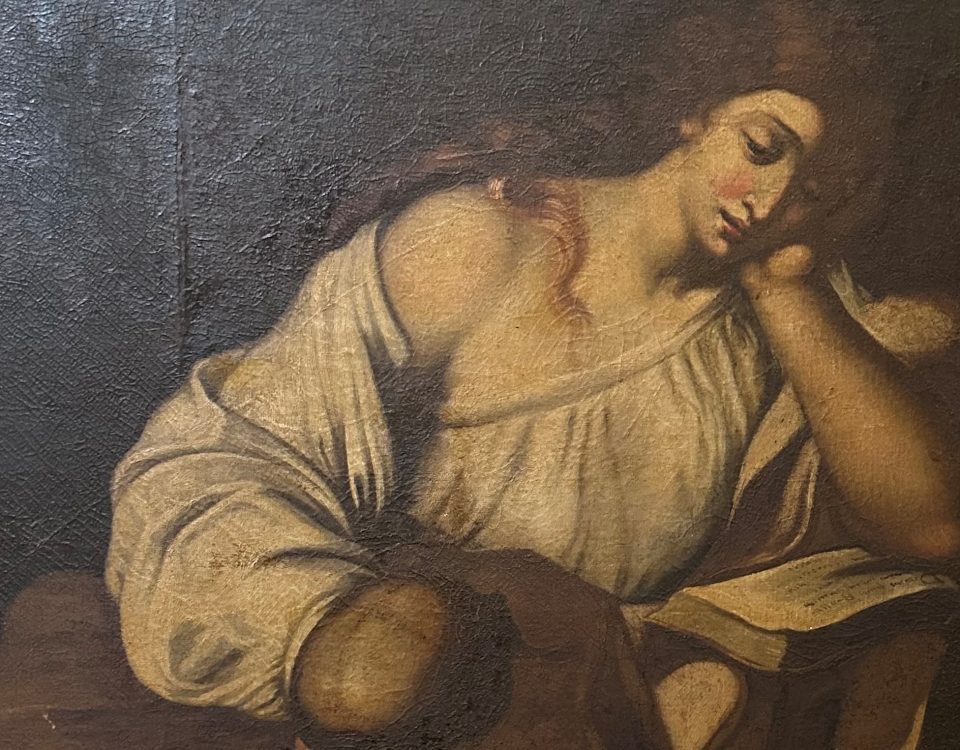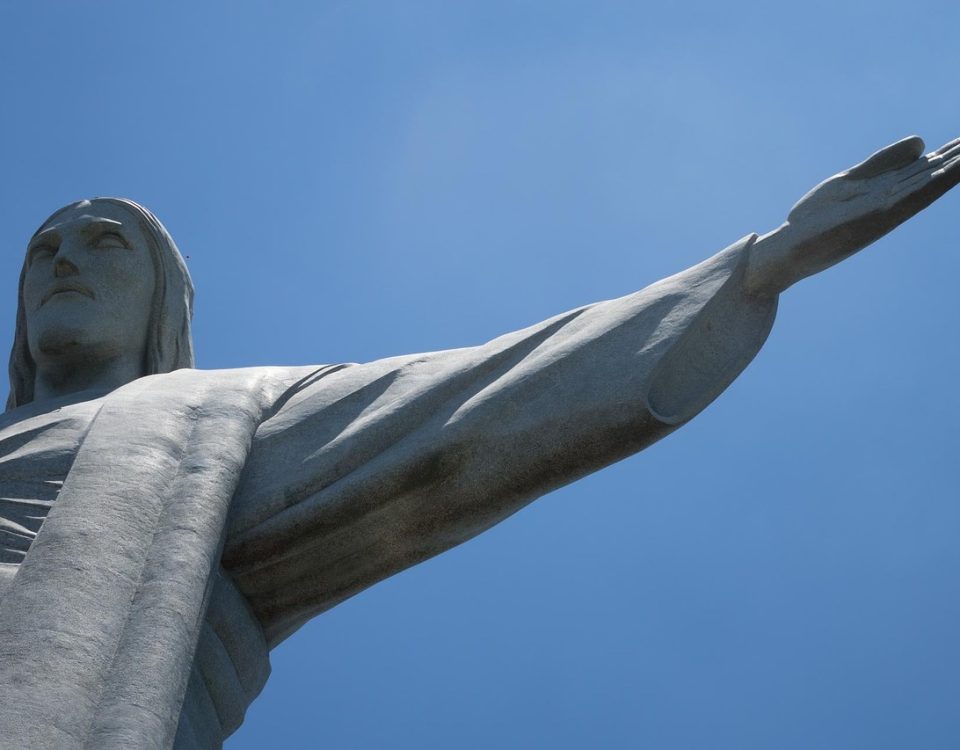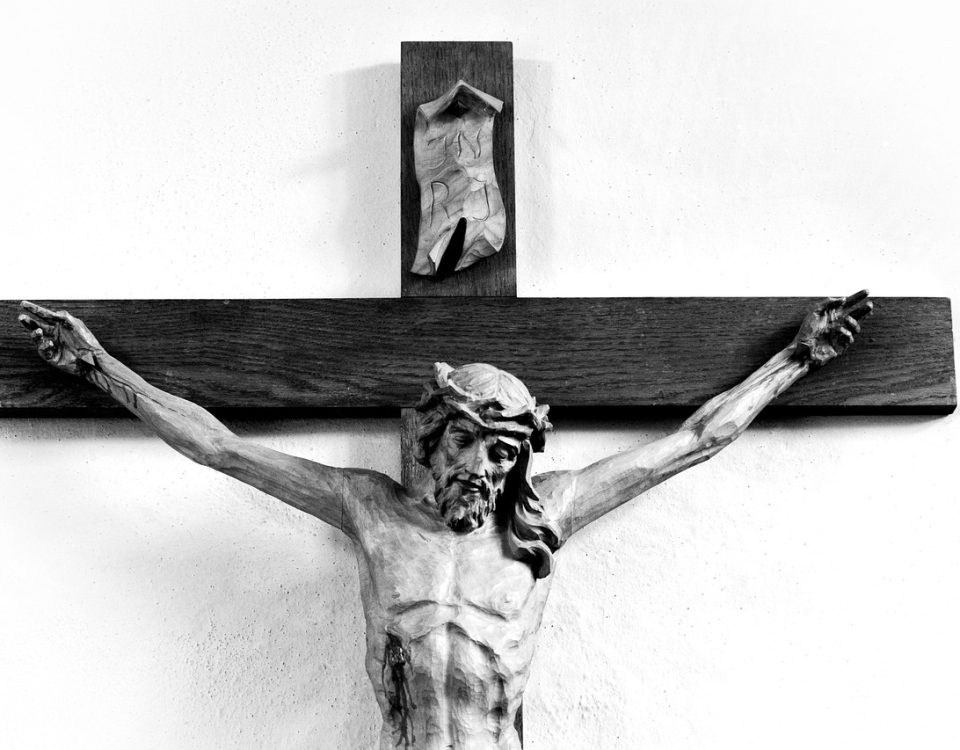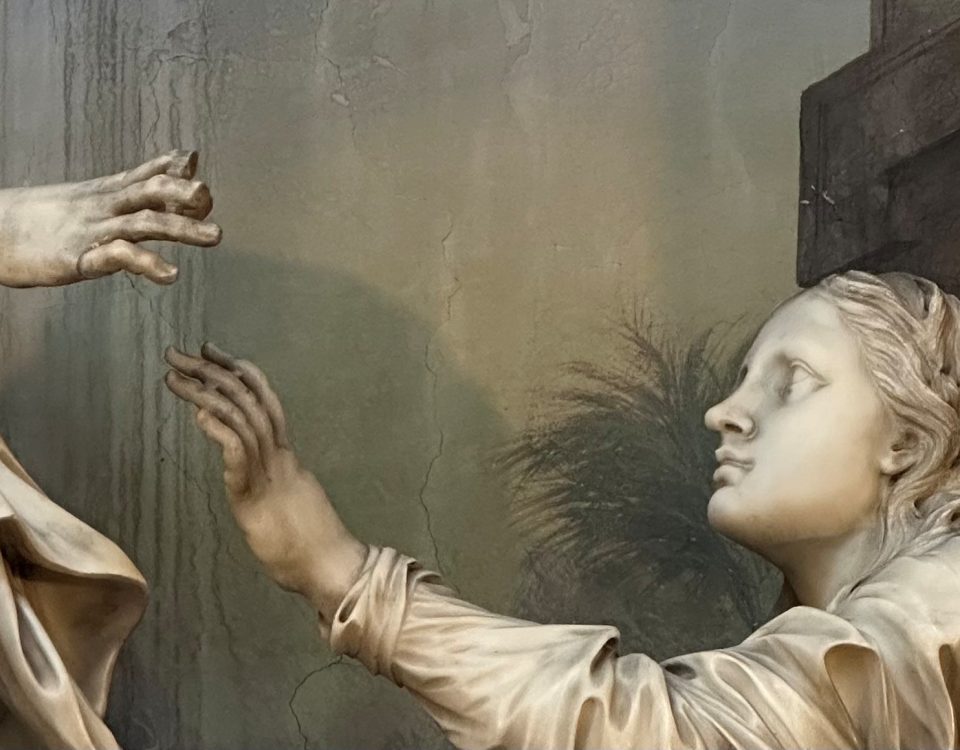Graham Greene’s novel The Power and the Glory begins with the protagonist, the “whiskey priest,” waiting for a boat on the banks of the Grijalva River, contemplating his escape.
Greene’s character, in an inversion of the Gospel, wants to end his ministry where Jesus’s ministry began. And so, the two stories commence on the banks of a river: one holy, the other less so. But both are tales of suffering and death. The hunt is the plot and the execution is the end. This is how I always read the novel: as a pathetic shadow of the priesthood of Christ.
The priest’s story of course does not end at the river. It begins there. Distracted by Mr. Tench, the British expatriate dentist, and tempted by relief from the heat of the day and the chance for a drink, the priest follows the Englishman to his office to idle awhile, lost in pointless conversation. That is, until the priest is pulled back into the peasant hinterland for the sake of a dying woman. Although incognito, the priest is found by a child who insists his mother is dying and needs a priest.
The unenlightened faithful will not let the priest run away, much less even rest. He is like a “slave of his people,” Graham wrote, “who may not even lie down in case the winds should fail.” The priest, anything but heroic, follows the child back into the wilds with an “unwilling hatred,” a joyless fidelity that would, in the end, mean his capture and death.[1] This tale is anti-heroic: the story of the pursuit, arrest and execution of a bad priest, a drunkard and a philanderer (a story not unheard of in the history of priests).
The story comes to mind while reading James Carroll’s widely discussed essay, “Abolish the Priesthood,” featured on June’s cover of The Atlantic. It is an anguished visceral piece in which Carroll rehearses almost all the well-known evils of the Catholic Church and clericalism before calling for an end to the priesthood and the “cassock-ridden power structure of the Church.” Its publication was timed with intention—published not only as the Catholic Church continues to reel from an abuse crisis she cannot escape, but also at the time of year when new priests are ordained around the world. Its purpose was to dispirit.
This, to be sure, it does accomplish. It is a depressing essay where Carroll’s personal pain writhes in every sentence. His pain is more important than what he says. His assessment of the evils of clericalism and his recommendation that the priesthood be abolished in favor of “democratic structures,” are a Jeremiad confused by decades of understandable anger and disappointment.[2] What he writes is nothing new at all. His demons owe their existence as much to Weber as they do to Pius X. There is also nothing new under the sun in the rebuttals of Carroll written by countless Catholics. They attack Carroll’s theology, historiography, and liberal utopianism. His argument has been well-dispatched by theologians much abler than me.
But, still, Carroll’s pain is more important than what he says. It is something that ought to be respected and considered. For me his dream of an end to the priesthood lingers like a haunting possibility. It is why when reading it, I thought of the whiskey priest, the anti-Catholicism of Mexican secularism, and the battle of moralities described in Graham Greene’s novel. The lieutenant and the priest, the hunter and the hunted: both of them loved children, both saw the future in children. It is just that the priest’s child, conceived in a moment of sin and failure, also reproached him, reminded him of his ruined vocation.
His prayer was the child’s salvation: “O God, give me any kind of death—without contrition, in a state of sin—only save this child!”[3] The lieutenant, however, sought to root out priests from the world, not for the sake of children’s souls but for their future. It was the leuitenant’s mission to “eliminate from their childhood everything which had made him miserable, all that was poor, superstitious, and corrupt.” Furthermore, “He wanted to begin the world again with them, in a desert.” He continued, “You are fools if you still believe what the priests tell you.”[4] Since reading Carroll’s piece, that is the conflict of emotions, the war of visions, the hatreds, all too real, I keep churning over. It is what has me wondering how in the 21st century the priesthood might finally be abolished—wondering how, unlike past failed efforts, the abolition of priests might finally be accomplished.
It might be accomplished by the convergence of exhaustion, depression, pain, and anger. Like lovers that just stop talking to each other save for the occasional heated exchange: that is how priests and the people of God may finally part company, equally hurt and wounded by the divorce. The former depressed into oblivion, the latter embittered and lured into some purer irreligion. These results are more likely to be the sadder bitter reality of a priestless Catholicism. Not the flowering renewal of the Church, “egalitarian, authentic, ecumenical,” reformed by hash-tagged resisters and “internal exiles,” but more the numb silent decay of dying relationships. That is the most likely outcome of Carroll’s anticlerical dream.
A good many priests are also tired, depressed, and haunted. They remain faithful, though most perhaps not as heroic as they could be. They are traumatized by the abuse crisis too, parish priests especially. Battling our own sins, we also must account for the wickedness of our brethren, most of whom are decades dead. It is as if the iniquity of the ancestors has visited the children’s children (Exod 34:7).
Powerless to do anything other than weep in secret and continue to serve with professional kindness, many of us celebrate the sacraments these days with lonely, heavy hearts, some of us barely hanging on. Bad or barely passable priests, admittedly, or just plain tired and unimpressive, many of us are standing on the banks of our own rivers, like the whiskey priest of Graham’s tragedy, contemplating escape.
Pious priestly mythology aside, it is how the priesthood would end if it could—how some priestly ministries indeed ended—by good men giving up simply for sadness of it all. That is the far more realistic possibility, rather than the dream of Carroll’s painful moral exhaustion followed by a happier priestless future that he expects to emerge “frame by frame.”[5]
For instance, a recent visitor to my parish told me a horrible story of abuse that happened up north somewhere decades ago. “Hundreds of victims,” he said. A terrible story undoubtedly, despite the blurred details, it is how he told the history that stung. “You priests,” he began. “You priests,” he kept saying. This is the sort of pain and anger we parish priests now absorb like a sponge with every new headline. Asked by cautious parents how much priests are involved in the parish school, gestures and words of polite suspicion, awkward conversations with well-meaning Methodists, liberal friends lecturing you about celibacy, jokes about altar servers, the loud rantings of disturbed visitors: it has become the new normal of parochial life, this constant low hum of rage.
We priests must accept the rage. There is justice in it. There is possibly something holy in it, even if humanly speaking, it is debilitating to hear such things every Sunday, to be ranked with evil and despised and suspected for others’ crimes. Data on the mental health of priests is scarce, mostly anecdotal. Nonetheless, one does not need social scientists to suggest the possibility that the strange ecosystem of piety and anger might not make for mentally well clergy. “That is what everyone says all the time—you do no good . . . I can hear them saying it all over the world,” exclaimed the whiskey priest “with monstrous bitterness,” a bit drunk.[6]
Such is the psychological wear and tear upon many priests today, most of whom had nothing to do with any of it anyway. Parish priests who are, in any case, powerless to do anything about it. It is why many are struggling to stay faithful and hopeful and charitable under a mask of fragile clerical heroism, singing still every day, “Lift up your hearts . . . Let us give thanks to the Lord our God . . . Hosanna in the highest.”
Now I say this not to elicit sympathy or claim the power of the victim. We priests, to be clear, are not victims. Nor, do I mean to smuggle in the idea that somehow only the priests are to be identified with Christ. Rather, I say it to suggest that if the priesthood could be abolished, this is how one would go about it: by curating the suspicion and hatred for an entire class of people in the Church and by cultivating irreconcilable anger and endless bitterness until it wears down the good will of even the best. That is how the priesthood would be abolished if it were possible: by the poison of a general hatred that would make the good men who are left finally leave.
But, of course, that is only if it were possible. That is where hope is, in the conditional, at least for those of us who still want priests around, who believe the priesthood constitutive of Catholicism. In the conclusion of Greene’s novel, with the whisky priest dead, another priest shows up. Just as a child knocks on the door at the beginning of the novel, dragging the priest back to the people, so at the end, a priest knocks at the door of a quiet Catholic family to renew the relationships which make up the Church, of people and priest, both sinners, living the faith together in a hostile world. The boy opens the door to kiss the priest’s hand before he can even give his name—the end of the novel is a new beginning.[7]
The point I am trying to make is more than a narrative and historical conceit. It is also ecclesial and pastoral. It belongs to the eternal genius of the Church, as Newman wrote, that the Church “ever begins at the beginning . . . continually employed in laying the foundation.”[8] You see, no less the Church, the priesthood cannot be abolished. If it were possible, we priests would have found a way already. Rather, the Church and her priests can only be renewed. This touches upon the mystery of the endurance of priesthood, that the priesthood does not belong to priests nor to the Church, that the priesthood is not ours but instead continues forever because it’s Christ’s (Heb 7:3).
The thing about the Church and the priesthood is that it is never fully destroyed, instead it just begins anew again. This is the theological truth that finally brings the people’s scorn and the priests embrace of it together. It is why Carroll’s essay, painful and problematic though it is, still belongs to the healing of the Church. It is why it belongs to the mystery of our purgation as the people of God, our present redemption as the body of Christ together.
That is, when priests embrace the anger of the people—the “you priests” sort of anger—what the priests are doing, as sinners themselves, is accepting scorn that is a mixture of justice and sin. It is, like the whiskey priest, a very pathetic human imitation of the atoning work of Christ, riddled with human imperfection, uncertain it does any good at all. Nonetheless, it is simply the priest’s job to take it, to allow himself to be spent by the people, until such time as either he is purged and perfected or used up for the good of Christ and the redemption of the Church. As Bernanos’ nameless priest put it, “our pain is on behalf of souls.”[9] It is the priest’s job to embrace the pain and anger and sadness, to be nailed down by it—not like Christ, but like the criminals beside him.
His task is like that of the Curé d’Ars, who when weeping in the confessional was asked by his rote penitent, “Why do you weep so much, Father?” “I weep,” he said, “because you do not weep enough.”[10] Again, as Bernanos’s country priest wrote after listening to his doctor, critical, and railing against the sluggish injustices of the Church: “True pain coming out of a man belongs primarily to God, it seems to me. I try and take it humbly to my heart, just as it is. I endeavor to make it mine—to love it.”[11] Such is the present mystical work of the parish priest, traditional indeed, heavy and unpleasant but apparently necessary—to weep between the porch and the altar in penitence as we look for God (Joel 2:17).
It also gives meaning to the anger of the people, even the foolish anger of bystanders and the morally lazy who find in every failure of the Church reasons to ignore her. A purging force, the anger of the people is energy expended that, although dangerous as anger always is, can still be a righteous medicine if applied rightly to its proper object, which is the Church and its priests. And that is because the ministerial priesthood and the common priesthood of the faithful are “ordered to one another,” the former in service to the latter.[12] That is why it is better the people of God be angry with their priests, even to their faces, because it keeps them in a relationship with their priests.
Like spouses who fight but stick together, anger is a dangerous force but often not so much as silence. The people’s anger, priests’ sinfulness: both are in communion with the other in the common failure and the common redemption of the Church. That is the redemptive misery and mystery of the contemporary Church—that we belong together in anger, content as failed, embarrassed Catholics for such a state of things, but patient nonetheless. Because, again to quote Newman, it is “the rule of God’s providence that we should succeed by failure,” and by the grace that lights upon ruins.[13]
For these reasons I hope James Carroll comes back to the Church. I also hope he continues to point out the evils and failings of Catholics, of us priests especially. Chiefly, because he is right about a lot of what is going on, but also because there is a deeper providence to his witness. Because by staying in the Church he will contribute to the brutal work of our common penitence and redemption. It is why, after all this, he is not a villain and why we should not think him such. His words belong to the pain of our healing. Ultimately, he is my brother, and I, a priest, am his brother too.
[1] Graham Greene, The Power and the Glory (London: Penguin, 1990), 19,
[2] James Carroll, “Abolish the Priesthood,” The Atlantic.
[3] Greene, op. cit., 82.
[4] Ibid., 58, 74.
[5] Carroll, op. cit.
[6] Greene, op. cit., 17.
[7] Ibid., 222.
[8] John Henry Newman, The Idea of a University (Notre Dame: University of Notre Dame Press, 1982), 154.
[9] Georges Bernanos, The Diary of a Country Priest (Cambridge: De Capo Press, 1965), 28.
[10] Francis Trochu, The Curé d’Ars (London: Burnes Oates & Washbourne, 1949), 290.
[11] Greene, op. cit., 83.
[12] Catechism of the Catholic Church 1547.
[13] Ian Ker, John Henry Newman (Oxford: OUP, 1990), 722.
This essay was originally published for The Church Life Journal, a journal of the McGrath Institute for Church Life at the University of Notre Dame. To read the original, click here.

